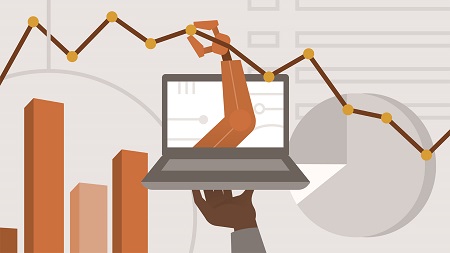
English | MP4 | AVC 1280×720 | AAC 48KHz 2ch | 2h 07m | 312 MB
The hype about big data may have peaked several years ago, but big data is far from gone. Instead it forms the foundation for some of today’s most exciting technologies. Artificial intelligence (AI), machine learning, and data science rely on big data, or data that—by virtue of its velocity, volume, or variety—can’t be easily stored or analyzed with traditional methods. In this nontechnical course, Barton Poulson digs into the topic of big data, explaining how it works and shapes our modern data universe. Barton explains big data’s relationship to AI, data science, social media, and the Internet of Things (IoT). He goes over some of the ethical issues behind the use of big data. Plus, he covers techniques involved in analyzing big data, including data mining and predictive analytics.
Topics include:
- How does big data fit in the modern data universe? Explore big data’s impact on data science, artificial intelligence, and machine learning, and the methods used with big data.
Table of Contents
Introduction
1 How big data shapes AI
Defining Big Data
2 The volume, velocity, and variety of big data
3 Artificial intelligence and machine learning
4 Social media and the Internet of Things
5 Data warehouses, data lakes, and the cloud
6 Edge computing and fog computing
How Is Big Data Used
7 Big data for business strategy
8 Big data for customer interactions
9 Big data for applications
Big Data and Data Science
10 Ten ways big data is different from small data
11 The three facets of data science
12 Data science without big data
13 Big data without data science
Ethics in Big Data
14 Big data and privacy
15 Data governance
Data Logistics
16 Structured, semi-structured, and unstructured data
17 Batch processing vs. stream processing
18 Distributed storage and processing
19 An evolving data landscape
Analyzing Big Data
20 Challenges with data preparation
21 Visualizing big data
22 Data mining
23 Text analytics
24 Sentiment analysis
25 Predictive analytics
26 Anomaly detection
Resolve the captcha to access the links!